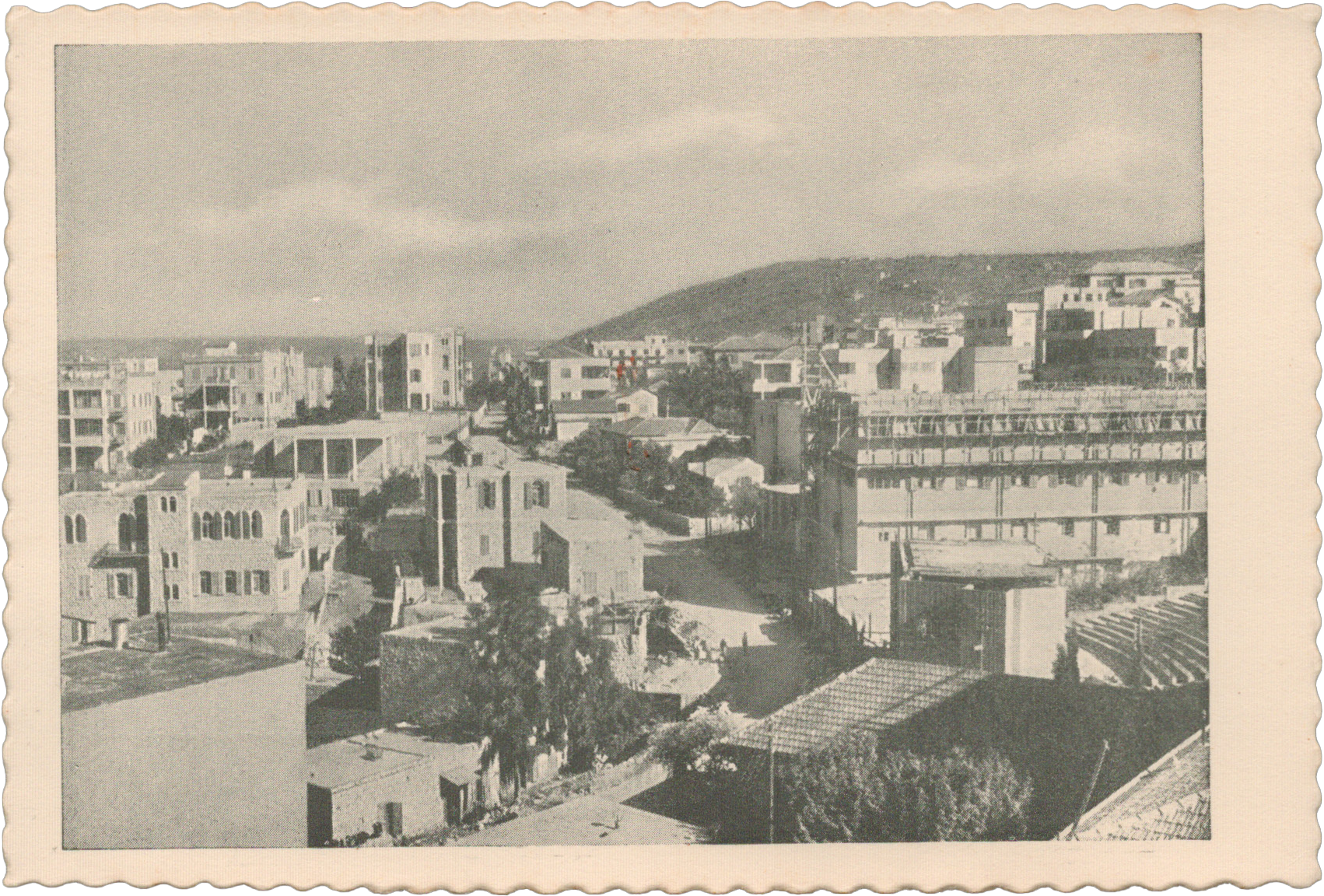Haifa. Hadar HaCarmel.
Haifa. Hadar HaCarmel. Photo: L. A. Robitschek. Published by Tmuna, Jerusalem. Ca. 1930
Please support our work by buying one of our books.
Leo Arthur Robitschek (1893–1961) was a painter and certified adman who left Vienna for the Yishuv in 1933 or 1934. After the war, he settled in Venezuela. Tmunah is the Hebrew word for picture/photograph.
Returning to Haifa in 1933, the physician and veteran Zionist Elias Auerbach (1882–1871), who had first settled in Haifa in 1909, published a report on the city’s development in the periodical of the Zionist Association of Germany, Jüdische Rundschau:
“The greatest surprise is the Jewish upper city, Hadar HaCarmel. Founded as recently as 1922, even three years ago it was still a tranquil, generously spaced assemblage of villas. Now it is suddenly the focal point of feverish activity. No wonder! Three years ago, 4,000 people lived here, now it is populated by more than 12,000 and new arrivals join them every day. The entire neighbourhood is one big construction site, filled with the noise of cement mixers and the dust of the rubble that frequently comes close to entirely blocking the streets. Three or four-storey houses beholden only to the principle of utility are shooting up all over. Hadar HaCarmel has hardly become more beautiful! The stunning view of the bay to which every property owner used to point with pride is now limited to the upper floors of houses located further up. On the high street, Herzl Street, each house sports an awning lending shade to a thoroughly modern shop and during the cooler hours … they are thronged by shoppers traversing the street in animated conversation, presenting the image of a major city in the making.
The distribution of the Jews in the city has changed markedly. Three years ago, most of the city’s Jews, some 8,000, lived in the Arab lower city, ca. 4,000 in Hadar HaCarmel, close to 1,000 in the suburbs of Bat Galim and Neve Sha’anan and one hundred on Mount Carmel. Barely 5,000 now live in the lower city, 12,000 in Hadar HaCarmel, roughly 1,000 in Bat Galim and Neve Sha’anan, respectively, 500 on Mount Carmel and between 1,000 and 2,000 in various minor settlements on the outskirts. In addition, a new, rapidly growing suburb with currently 1,000 inhabitants has been developed on the Kishon. (Among Haifa’s roughly 55,000 inhabitants there are currently ca. 22,000 Jews). As a result, the old city has become much more Arab again, and the number of Jews one sees on the streets, markets and bazars of the old city is constantly decreasing.
The fact that all the new arrivals want to settle in Hadar HaCarmel has created an enormous housing shortage and finished flats are nowhere to be had. Based on the plans one rents space on a floor whose construction has barely begun with a waiting time of two to four months until the flat is finished.”
Four of Auerbach’s siblings were murdered by the Germans. Among them was his sister Helene Reich, née Auerbach (1884–1942), the mother of Marcel Reich-Ranicki (1920–2013), who survived in hiding and went on to become one of (West) Germany’s most influential literary critics.

